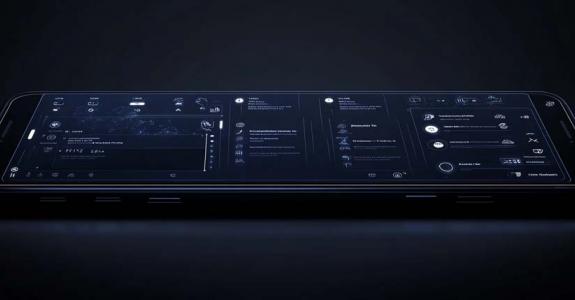Our imagination works overtime. Ideas pop up, and we wish to push them into the market faster. But nobody knows for a certainty if the concept will lead to success or loss of time and money.
We'll help you to try you idea on real market!
According to Statista, 25% of apps get abandoned after being used just once. At the same time, their number in app stores grows, and the competition gets more and more cut-throat.
To win the jackpot, onboard the minimum viable product (MVP) strategy. The MVP represents a product version that has just enough functionality to satisfy the needs of early adopters.
In the hands of actual users, a minimum viable product is not a theory anymore. It brings real feedback, which will determine the strategic direction of further product development, initiate changes, or even cancel work on the product.
Frank Robinson, the president of SyncDev, first introduced the term Minimum Viable Product in 2001. Ten years later, a Lean Startup ideologist, Eric Ries, popularized the concept. He stressed the impact of learning in new product development.
Based on his own experience of one hundred startups, Eric Ries recommends to
"remove any feature, process, or effort that does not contribute directly to the learning you seek".
If you are planning to attach yourself to MVP development, let's see how to get it right.
MVP Meaning

No matter how well you have researched the market, surprises may appear anytime and put your newly launched startup into jeopardy. "You don't bet the farm until you test the water", - this is how Scott Brinker writes about the MVP concept essence.
What is MVP? A product without bells and whistles, distilled to its core, with a minimum number of functions to perform a single task for the user. MVP design represents an unprecedented focus on what matters most for defined users.
The primary users are usually the most responsive, more forgiving of a product's shortcomings. That's why their insights, feedback, and the way they use the product will define the development team's further work. In other words, your MVP won't become viable unless your customers say so.
Although the MVP meaning seems simple, some entrepreneurs still misunderstand the meaning of MVP in business. In the pursuit of perfection, organizations often overload their MVPs with features. In fact, the minimum viable product simplicity won't turn interested customers away. After all, they only want their problem solved.
For an MVP app, there's always a list of essential features the app won't go live without. The rest is usually defined by the idea and the industry the application will be released for.
Even if you have enough money to build an application with a lot of features, it's better to validate it first. The sooner you can find out whether your product appeals to customers, the less effort and investment you spend on a product that is not going to succeed in the market.
By the way, minimum viable product development doesn't equal to its prototype. The latter is a technical working model of several aspects of the product. The development team usually uses a minimum viable prototype to reduce the number of mistakes.
What Benefits Does MVP Have?

Now when we've figured out what is a minimum viable product, let's look at how it benefits your business.
Keep the costs low
Reducing the product to a "minimum" ensures development cost reduction. As it usually takes a great deal of money, countless hours of developers' and designers' work, the end may not justify the means.
Know what your customer needs
A minimum viable product stops you from developing something you assume your customers will like. Instead, you get a genuine demand. Plan and prioritize what you can change about your product to become more valuable since it is clear where to direct efforts.
Develop quickly
MVPs release in the shortest time - an average MVP project takes up to 1.5 months. Within this time, you can already get a ready-made business.
Build relationships
Interactions with the first customers produce a great value - a business gets entrenched in the market right away. After all, everything starts with these users' feedback. So, the sooner you start working with them, the more loyalty you will earn.
Reach market leadership
A minimum viable product also contributes to fast market entry. If you come up with a truly revolutionary idea, the sooner the world witnesses it, the more chances you gain to set yourself apart when competitors with similar products begin to appear.
On top of that, no advanced analytics, planning, or marketing research will discover the information you get when you build an MVP. Everything is already there - no need to spend time and money on research.
How to Make MVP Right and Not Stumble on Pitfalls

Experimentation is the gist when you want to build an MVP. To pull through this process, and avert common mistakes while developing a minimum viable product, look at the main MVP criteria.
Thing one is to arrange a brainstorming session to collect idea gems. A new product often starts with a solved problem or an invention, accidental or otherwise. It would be best if you outline how your product will provide value to customers. Why would they buy it? What value does it offer?
No matter how everything seemed rosy and right, here is the first sticky point. It is called an existing idea. Be careful not to reinvent the wheel. Still, if the current product showed no demand or the previous versions were not as good as yours and did not fully cover the needs, it's an excellent chance to succeed. Just pick the gap that the competition isn't filling, fit yourself into it.
After you decide on your product's main idea, pinpoint your most important competitors and learn their essential aspects. Remember, research and planning are always about the further smooth development process.
Once you have decided on your idea to build an MVP, start designing and developing your product. This resembles climbing a mountain. It will make it more difficult to move and reach the top if you take too much with you. So, the less functionality you plan, the easier it will be for the customer and you.
For the MVP development itself, you will likely want to turn to a Software Development Company, experts with rich experience in creating minimum viable products. Rest assured that the team will not waste time on anything beyond the bare minimum. Over time, specialists can build every other feature as they assess the customers' preferences and choices.
After a minimum viable product goes into development, the testing phase begins. At each stage of MVP development, it is necessary to check whether the project meets the requirements. Before the MVP launch, developers will run alpha testing. Then beta testing will begin among your friends and colleagues (or another small group of people).
Finally, it's time to start real-time testing in the market. Keep in mind that your marketing plan is not a one and done, primarily when marketing a minimum viable product. You should always be adapting to changing market demands and user behaviors. Sift through feedback and interactions with MVP, flounder tactically, as you need to respond quickly, make changes, add features, and conduct A/B testing. The product may even change dramatically, as user reviews can vary significantly from the original project.
Examples of Successful MVP

Many startups became powerful because they started as MVPs. AdWords is a vivid example.
AdWords Express, its simplified version, was designed to generate relevant ad copy for businesses' ad campaigns. The process seemed to be automated, but in reality, it was a group of students quickly typing and copying in the back end.
When this small bit of functionality became a breakthrough, they started to work on the fully automated product. With the right approach, this project went far, eventually changing not only Google as an organization but also the entire landscape of online commerce.
One of the most successful startups of all time, Uber, started with a bare-bones version - unrecognizable from what we use today. It was a simple mobile interface that paired drivers who were willing to take passengers with people who wanted a ride. Uber started by adjusting to a small user base in San Francisco and used its findings to cultivate iteratively. All the features were slowly introduced as the company scaled.
While many startups became successful with the help of MVPs, it does not mean that its methodology is limited solely to startups. Many powerful businesses still follow the MVP approach to release products and concepts in a short timeframe and minimum resources. Like that, organizations avoid substantial financial investments and losses in releasing an ineffective final product.
Bottomline
A minimum viable product approach for a startup enterprise and an established corporation alike is a clear and fast journey to a fully-fledged product. It is an excellent means to remain focused on what your product's purpose is, who it is for, and why it is needed.
If you are interested in MVP software development, you are welcome to discuss your business and tech needs with Zfort Group experts. With numerous MVPs behind our backs, we are experienced in building, testing, and refining digital products.
We'll help you to try you idea on real market!






